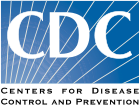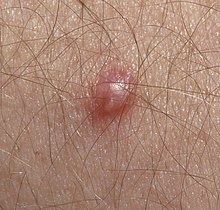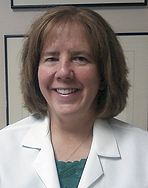Human papillomavirus is the most common sexually transmitted infection in the United States. It’s so common that the CDC estimates most people will contract it at some point in their lives, and recommends all 11- and 12-year-olds get vaccinated.
The most dangerous strains can cause cervical and other cancers.

But HPV vaccination rates are on the rise, and a new study suggests the Affordable Care Act may have helped spark the uptick. National statistics show that HPV vaccination rates increased after the Affordable Care Act was passed in 2010.
Because multiple doses of the vaccine are needed, and they can be up to $200 a pop, HPV vaccination rates have traditionally been lower than other recommended vaccinations.
But the ACA’s prevention and wellness mandates may have changed that, says study author Rosemary Corriero, MPH and Oak Ridge Institute for Science and Education fellow in the CDC’s Immunization Service Division. She was a University of Georgia grad student while doing work on the study.
Corriero’s study shows that the ACA’s prevention and wellness requirements might have influenced the increase. The ACA mandates that insurance plans cover certain health benefits — including preventive services such as HPV shots. That means patients can get the vaccines at no cost — a big reduction from the $150 to $200 out-of-pocket price tag before.
Though private plans may have covered the vaccines before, the ACA mandated that all plans cover it, as well as a handful of other essential health benefits for children and adults.
“Many choices go into insurance and vaccination decisions, but maybe ACA did help,” Corriero says.
The study can’t definitively say why HPV vaccination rates have increased because so many factors go into the expanded ACA coverage and prevention, and Corriero says doctors’ influence and media campaigns may have propelled the increase as well. She also notes that a new two-dose HPV vaccination might help increase overall uptake rates, compared to the original three doses needed.

The study used data from the National Health and Nutrition Examination Survey (NHANES) questionnaire that included 4,599 participants from a random sample of the U.S. population. Corriero and colleagues at University of Georgia’s College of Public Health controlled for demographic data known to affect vaccination rates such as income and insurance coverage, and found that 9- to-33-year-old women were 3.3 times more likely to have the HPV shot after the ACA was enacted. Respondents were also more likely to have received the full vaccination dose post-ACA.
“We saw that after ACA implemented, income was not associated with vaccination uptake,” Corriero said. “So the ACA might have helped increase vaccination rates by reducing financial barriers to vaccination uptake,” she said. Uptake refers to general vaccination use, which Corriero’s study showed was influenced by income before the ACA, but not after.

Most HPV infections clear up. But because some strains can cause cancer, the CDC wants all young people to be vaccinated.
An estimated 79 million Americans have HPV, with an additional 14 million new cases per year. The CDC estimates that about 11,000 women get cervical cancer each year, and most cases are caused by HPV. Georgia sees higher HPV-related cancer than most states, according to the CDC.
An HPV shot has been available since 2006, but vaccination rates have remained low due to cost and the multiple doses needed. Most states, including Georgia, do not require HPV vaccination for school entry.
Though Georgia is above the national 60 percent vaccination rate, disparities between Georgian girls and boys persist, with 65 percent of female teens and 41 percent of males receiving more than one vaccination dose. Both percentages have increased over the last decade.
Many children under 18 can get vaccinations through the Vaccines for Children program or federal health insurance coverage. But the study notes that similar to some adults, some children were not enrolled or underinsured prior to ACA’s expansion of prevention services.
“HPV vaccination has a lot of stigma because it has to do with an STI and in any public health realm, anything you’re telling a parent that has to do with sex is usually hit with a brick wall,” Corriero says. Because the shot prevents cancer in kids that might not show up for many years, “It’s not as simple as a Tdap booster every 10 years, or a flu shot every year,” she said.
“People trust their MDs,” Corriero said.

Dr. Sara Goza says public health campaigns and doctor knowledge can go a long way in influencing the decision to vaccinate at the best age.
“Vaccinations are more effective when you give them at a younger age — the bottom line is they respond much better,” said Goza, pediatrician at Fayetteville’s First Georgia Physician Group who serves on the American Academy of Pediatrics board of directors.
Goza says she has seen an increase in uptake over the last decade for several reasons — better preventive insurance coverage through the ACA, parents accepting the vaccination as effective and necessary, and more pediatricians purchasing and giving the shots.
“People are more comfortable with it now,” Goza said. “Right when it first came out, people were more skeptical, and we as pediatricians have helped people understand those fears are not justified and that the vaccination is safe.”
Though reimbursement rates for doctors giving the shot are better now than before the ACA, Goza said the payment still just covers the cost of the vaccination. When it was still new, it was a harder sell to parents and doctors, but, “as time went on, we realized how good it was,” she said.
“We just break even, but it’s the right thing to do so most pediatricians are doing it.”
Erica Hensley is a freelance writer based in Athens.

